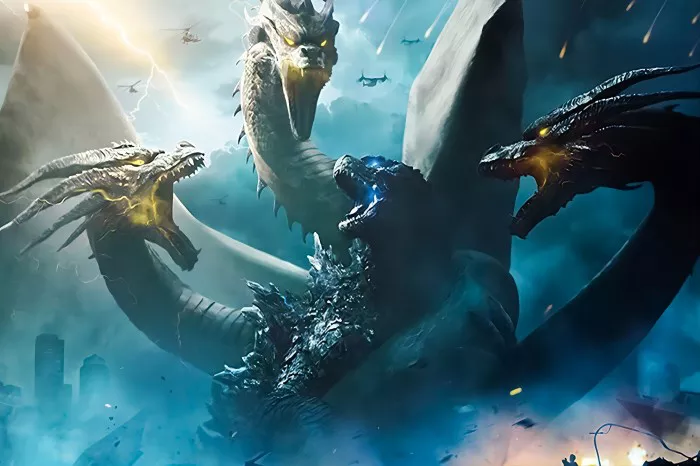Godzilla, the iconic giant reptilian creature known as the King of the Monsters, has become a cultural phenomenon since his debut in the 1954 Japanese film “Godzilla.” Born out of the ashes of World War II and the fear of nuclear devastation, Godzilla has evolved over the years from a symbol of destruction to a beloved pop culture icon. But how was Godzilla created, and what factors influenced his conception and evolution?
Origins of Godzilla:
Godzilla’s origins can be traced back to post-World War II Japan, a country still reeling from the devastation of the atomic bombings of Hiroshima and Nagasaki and the horrors of nuclear radiation. Against this backdrop of collective trauma and anxiety, filmmaker Ishiro Honda and special effects artist Eiji Tsuburaya set out to create a monster that would serve as a metaphor for the destructive power of nuclear weapons and the hubris of humanity.
The result was “Godzilla,” a towering reptilian creature awakened from the depths of the ocean by nuclear testing and unleashed upon the unsuspecting citizens of Tokyo. Godzilla’s rampage through the city, leaving destruction and chaos in his wake, served as a powerful allegory for the horrors of nuclear war and the consequences of humanity’s unchecked technological advancement.
Influences and Inspirations:
The creation of Godzilla was influenced by a variety of cultural, historical, and scientific factors. One of the primary inspirations for Godzilla’s design was the prehistoric marine reptile known as the Mosasaurus, whose fossilized remains were discovered in Japan in the early 20th century. The Mosasaurus’s serpentine body, powerful jaws, and aquatic habitat served as the basis for Godzilla’s iconic appearance.
In addition to natural history, Godzilla’s creators drew inspiration from various mythological and folkloric creatures, including dragons, sea monsters, and ancient gods. These mythical beings provided a rich tapestry of cultural references that helped shape Godzilla’s mythology and character traits, from his immense strength and resilience to his status as a symbol of divine wrath and natural fury.
Evolution of Godzilla:
Over the decades, Godzilla has undergone numerous transformations and reinterpretations, evolving from a terrifying force of destruction to a more nuanced and multifaceted character. In the early Showa era films of the 1950s and 1960s, Godzilla was portrayed as a malevolent force of nature, driven by instinct and fueled by atomic rage.
However, as the franchise progressed, Godzilla began to take on more heroic and sympathetic qualities, becoming a defender of Earth against other monstrous threats. This evolution was influenced by changing societal attitudes towards nuclear weapons and environmental conservation, as well as the desire to appeal to a younger audience.
In the Heisei era films of the 1980s and 1990s, Godzilla was reimagined as a more complex and morally ambiguous character, grappling with his own humanity and the consequences of his actions. This period saw the introduction of new adversaries, such as King Ghidorah and Mechagodzilla, as well as the exploration of themes related to genetic engineering, corporate greed, and the legacy of World War II.
Cultural Impact and Legacy:
Since his creation, Godzilla has become one of the most recognizable and enduring symbols of Japanese popular culture, inspiring countless films, television shows, comic books, and merchandise. His image has been parodied, homaged, and imitated in media around the world, cementing his status as a global icon.
Godzilla’s cultural impact extends beyond entertainment, influencing discussions about nuclear proliferation, environmental conservation, and the ethics of scientific experimentation. His status as a metaphor for the dangers of nuclear war and the consequences of human arrogance has made him a powerful symbol of resilience and survival in the face of adversity.
In recent years, Godzilla has experienced a resurgence in popularity with the success of Hollywood adaptations such as the 2014 film “Godzilla” and its sequel, “Godzilla: King of the Monsters.” These films have introduced a new generation of fans to the awe-inspiring spectacle of Godzilla’s battles and reignited interest in his enduring legacy.
Conclusion
In conclusion, Godzilla’s creation and evolution are a testament to the power of storytelling and the enduring appeal of iconic characters. Born out of the ashes of World War II and the fear of nuclear annihilation, Godzilla has transcended his origins to become a beloved symbol of strength, resilience, and cultural identity. As long as there are monsters to fight and worlds to save, Godzilla will continue to reign as the undisputed King of the Monsters, inspiring awe and wonder in audiences around the world.
Related Topics:
Godzilla’s Arch-Nemeses – Who Challenge the King of the Monsters
Why Does Godzilla Protect Humans – Godzilla as a Defender

